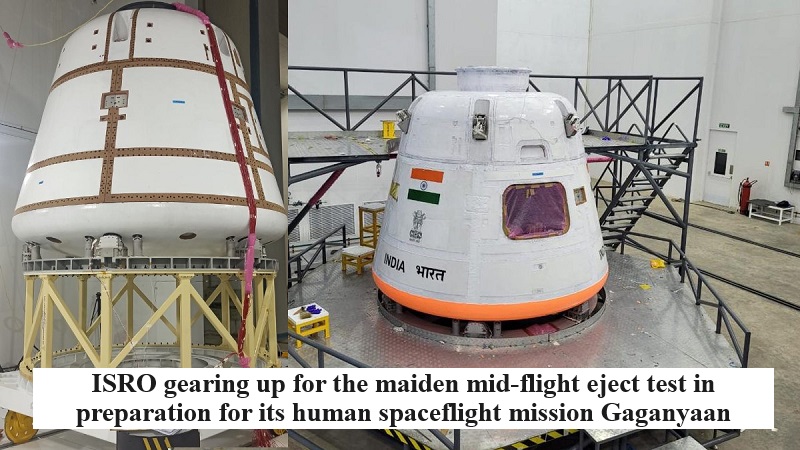
When developing a fighter plane, it is vital to demonstrate the mechanism for safely ejecting the pilot(s) mid-flight. Similarly, when working on an astronaut mission, it is of paramount importance to validate the mechanism for safely ejecting the crew module (the shell carrying astronauts) when the rocket is mid-flight. The Indian Space agency ISRO is currently preparing for its inaugural mid-flight ejection test as part of its preparations for the Gaganyaan human spaceflight mission. ISRO is expected to carry out this mission, known as TV-D1 or Test Vehicle Development Flight 1, by the end of the current month.
The Crew Module (CM) is where astronauts are accommodated, maintaining a pressurized, Earth-like atmospheric condition during the Gaganyaan mission to ensure the safety and well-being of the astronauts. For the Test Vehicle Abort mission-1 (TV-D1), the CM is an unpressurized version that has completed integration and testing and is ready for transportation to the launch complex. This unpressurized CM matches the size and mass of the actual Gaganyaan CM and houses all the necessary systems for deceleration and recovery, including multiple parachutes and associated systems.
The avionics systems within the CM operate in a dual-redundant configuration, ensuring that navigation, sequencing, telemetry, instrumentation, and power continue functioning even if one system fails. The CM for this mission is designed to collect flight data to evaluate the performance of various systems.
During the TV-D1 mission, the crew module and its associated systems will be mounted on a mini-rocket known as the Test vehicle. This mini-rocket utilizes liquid fuel and is based on the L40 stage booster of the GSLV (formerly GSLV Mk2) rocket. Once the required conditions (reaching Mach 1.2 or 1.2 times the speed of sound) are achieved during the flight, the Crew escape system and crew module will eject from the rocket when the vehicle is at an altitude of 17 kilometers. Subsequently, the crew module will ascend to a higher altitude, away from the rocket, and utilize onboard parachutes to decelerate and safely splash down in the sea, approximately 10 kilometers from the coast of the spaceport in Sriharikota. Following splashdown, the Crew Module will be recovered using a dedicated vessel and diving team from the Indian Navy.

Post Your Comments